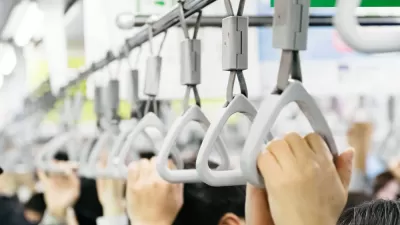A study from the University of Oregon has laid the foundation for a new level of architectural outcome: how the materials of buildings can facilitate healthy kinds of bacteria while managing the pernicious sort.
Shaunacy Ferro shares news of a study out of the University of Oregon that makes a detailed account of the variety of bacteria that inhabit the different surfaces and environments of buildings.
“Scientists haven't yet begun to pinpoint exactly which types of bacteria are good for our health, but when they do, architecture could play a key role in exposing us to the good bacteria, and keeping us away from the bad,” writes Ferro.
According to study co-author James Meadow, the findings of the report will enable architects to design buildings that influence the types of bacteria encountered by users. “Instead of just sterilizing the environment, we’ll actually manage our buildings in a more sensible way."
FULL STORY: How Architecture Could Shape Your Microbiome

Trump Administration Could Effectively End Housing Voucher Program
Federal officials are eyeing major cuts to the Section 8 program that helps millions of low-income households pay rent.

Planetizen Federal Action Tracker
A weekly monitor of how Trump’s orders and actions are impacting planners and planning in America.

Ken Jennings Launches Transit Web Series
The Jeopardy champ wants you to ride public transit.

Milwaukee Road to Get Complete Streets Upgrades
The city will reduce vehicle lanes and build a protected multi-use trail including bioswales and other water retention features on its ‘secret highway.’

Tackling Soil Contamination With Nature-Based Solutions
Los Angeles County residents and experts are turning to nature-based methods like bioremediation to address long-standing and fire-exacerbated soil contamination without resorting to costly and disruptive removal.

Rebuilding Smarter: How LA County Is Guiding Fire-Ravaged Communities Toward Resilience
Los Angeles County is leading a coordinated effort to help fire-impacted communities rebuild with resilience by providing recovery resources, promoting fire-wise design, and aligning reconstruction with broader sustainability and climate goals.
Urban Design for Planners 1: Software Tools
This six-course series explores essential urban design concepts using open source software and equips planners with the tools they need to participate fully in the urban design process.
Planning for Universal Design
Learn the tools for implementing Universal Design in planning regulations.
Ada County Highway District
Clanton & Associates, Inc.
Jessamine County Fiscal Court
Institute for Housing and Urban Development Studies (IHS)
City of Grandview
Harvard GSD Executive Education
Toledo-Lucas County Plan Commissions
Salt Lake City
NYU Wagner Graduate School of Public Service





























